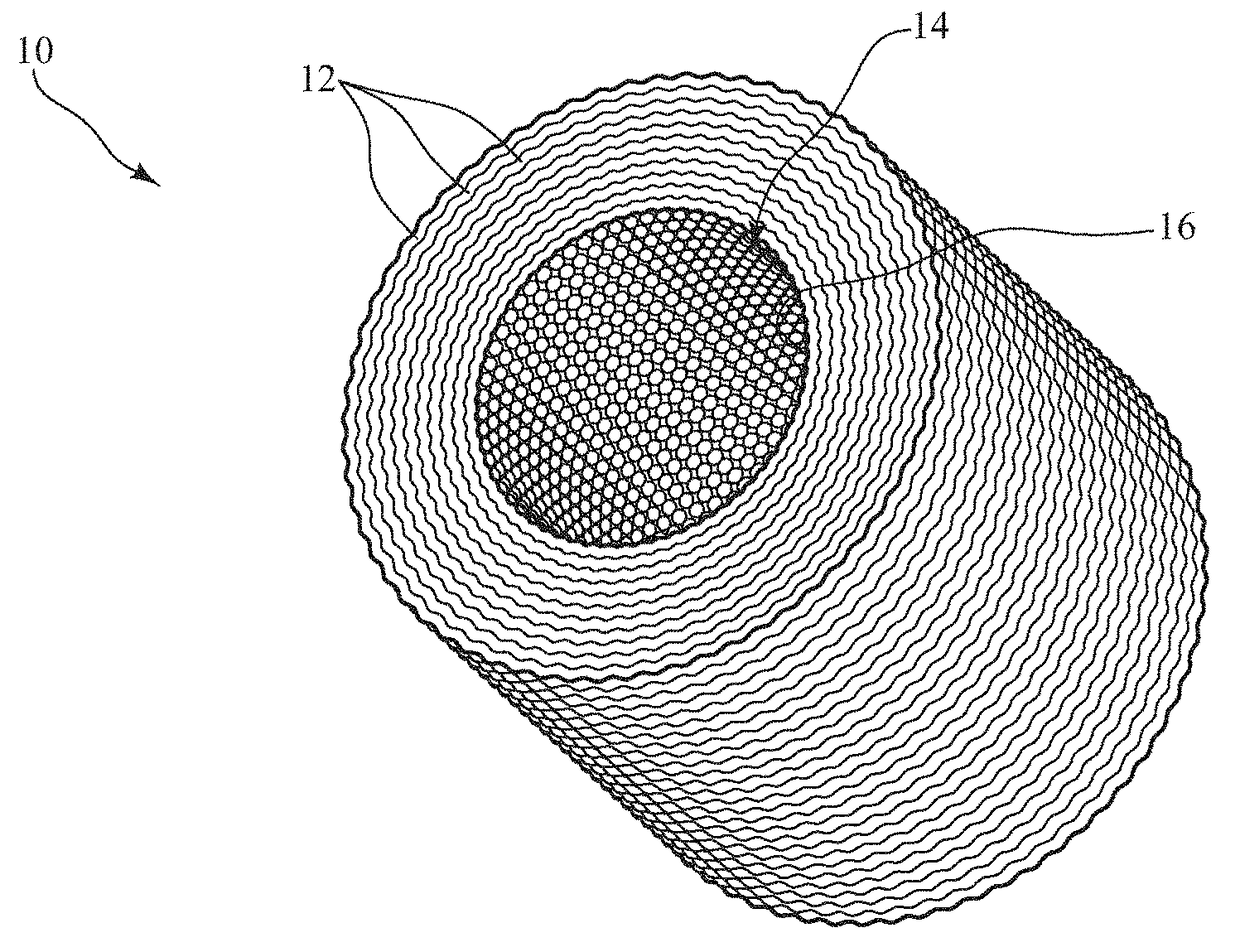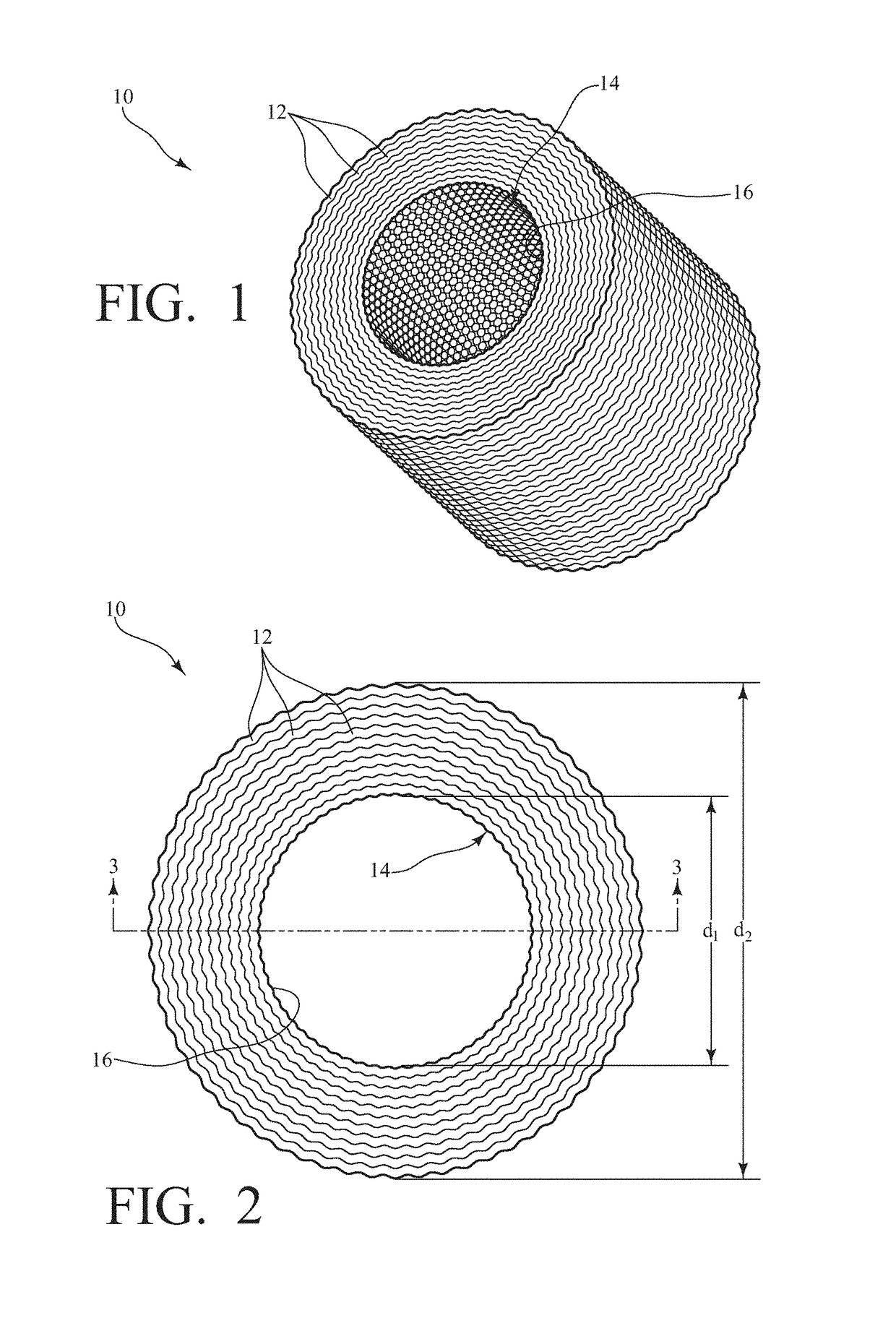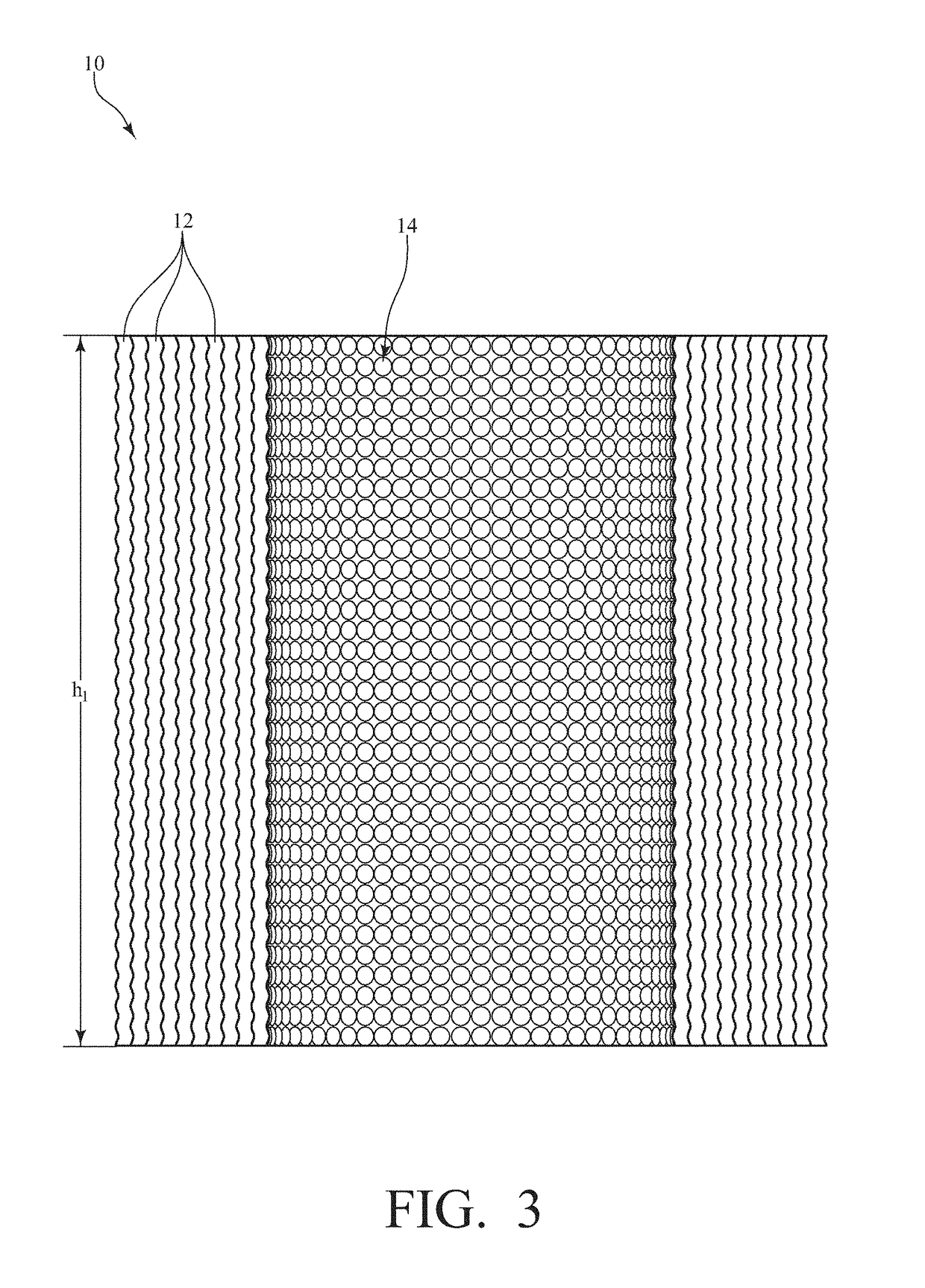For example, once ignited, a solid rocket motor cannot be stopped until its
propellant is exhausted and it cannot be throttled or restarted.
Most liquid
monopropellant rocket engines use highly toxic, environmentally damaging propellants that are now considered too dangerous and to environmentally unsafe for continued use.
Compared to most liquid bi-
propellant rocket engines, hybrid rocket engines are significantly less mechanically complex, and therefore more reliable and less expensive to develop, manufacture, and operate.
Despite all of their aforementioned advantages, conventionally designed hybrid rocket engines using cast-molded solid fuels like hydroxyl-terminated
polybutadiene (HTPB), a form of
synthetic rubber that has been the most studied hybrid
rocket engine fuel to date, are rarely if ever employed for applications requiring vibration free, consistent high performance.
Unfortunately, conventionally designed hybrid rocket engines using cast-molded HTPB as well as other cast-molded solid fuels, including
paraffin wax, polyamides, and thermoplastics have not been able to demonstrate the vibration free, consistent, high performance required for most rocket propulsion applications.
Excessive vibration and inconsistent performance is even more pronounced when higher energetic additives such as aluminum
powder have been blended into solid fuels like HTPB and
paraffin wax.
All of these disadvantages and inefficiencies are attributable to either the
solid fuel material selected or the fuel grain production methods used.
Comparative poor hybrid
rocket engine performance and their often unpredictable, even sometimes dangerous nature can be attributed to: 1) low regression rate, i.e., the rate at which the
solid fuel is consumed compared to solid rocket motors, 2) adverse
harmonics build-up inducing unacceptable, sometimes dangerous levels of vibration, 3) excessive
solid fuel waste compared to other rocket propulsion systems, 4) low
specific impulse (Isp) compared to most liquid bi-
propellant rocket engines, and 5) inconsistent, unpredictable thrust performance which renders them unusable in clustered (multiple engines per
launch vehicle stage or
spacecraft) configurations.
In a classically designed hybrid rocket engine, particularly those using slow burning fuels like HTPB, the burning rate is further limited by the
heat transfer from the relatively remote
flame to the fuel grain port surface.
Unfortunately, most attempts to safely and efficaciously employ this material in both solid and hybrid rocketry have not been successful.
If allowed to form an
alumina shell, effectively consuming a portion of the aluminum core, much of the elemental aluminum's energetic value is lost.
In addition to the challenges associated with obtaining a uniform blend of
polymer and
metal powder throughout the fuel grain using the cast-molding technique, improved burning rates by use of
metal additives such as aluminum have only served to exacerbate the problems associated with using relatively elastic materials such as HTPB and paraffin waxes as a primary hybrid rocket solid fuel.
Moreover, attempts to improve on regression rate further using high
energetic material such as ALEX
powder (an ultra-fine aluminum powder produced by the
plasma-explosion process) have been even less successful and have introduced a significant potential for spontaneous ignition or explosion
stemming from the pyrophoric nature of these ultra-fine powders.
This difference in the
combustion scheme of a hybrid rocket engine significantly degrades the propellant burning rate compared to a solid rocket motor propellant in which the
solid state oxidizer and fuel are in intimate contact.
Unfortunately, improvements in regression rate using multi-port designs have been offset by reduced fuel
volume loading, adverse
harmonics built-up that induces excessive and sometimes dangerous levels of vibration, unpredictable thrust performance, and increased fuel waste.
However, excessive vibration, unpredictable thrust performance, and increased fuel waste have also been observed in single port large hybrid rocket engine designs using both HTPB as well as faster burning, also structurally soft,
paraffin wax with a Young's Modulus of 0.061 GPa.
While it is generally understood that regression rate in a hybrid rocket engine is a function of fuel
burn rate and port surface area, the increased regression rates achieved using multi-port grain configurations have been more than offset by reduced reliability, consistency, efficiency, and safety.
Therefore, it is understandable that if a
combustion chamber wall's
structural integrity is degraded or compromised, chamber performance and reliability would likewise be degraded or compromised.
These oscillations can build to dangerous vibration levels and even a catastrophic over pressurization event.
Cast-molded fuel grains made from these materials are also prone to structural flaws such as weak spots, air bubbles, hot spots, and fractures that are also known to cause erosive burning and erratic, unpredictable performance.
These phenomena are considered even more problematic in large hybrid rocket engines, especially those using multi-port designs.
However, in a multi-port configuration, the amount of non-combusted fuel that is expelled can be significant and in certain circumstances a safety concern.
In multi-port designs, as the burn progresses and fuel is ablated and combusted, the structure between the ports ultimately losses its integrity until failure occurs.
In these situations, chunks of non-combusted fuel and
webbing material have been known to break free, partially and sometimes completely blocking the
nozzle, which can cause a serious safety problem.
While many of these achieved very high Isp—in the high 300 seconds (vacuum), they proved to be impractical for reasons mostly associated with the need to maintain a
hydrocarbon fuel as a solid at cryogenic temperatures.
However, obtaining a consistent, uniform mixture has always been a challenge using cast-molding techniques, especially when molding multi-port grains.
Inconsistent and unpredictable performance makes it impossible for a hybrid rocket engine to be seriously considered for most rocket propulsion applications and uses.
Further, many of the causes of inconsistent thrust performance can be tied to the cast-molding production process used to fabricate hybrid rocket fuel grains.
During the HTPB polymerizing process, small air bubbles are formed and hot spots are created due to incomplete mixing and uneven curing.
Even with these measures, air bubbles, structural cracks, hot spots, and other flaws seem to be chronic for fuel grains made using the cast-molding process.
 Login to View More
Login to View More 


